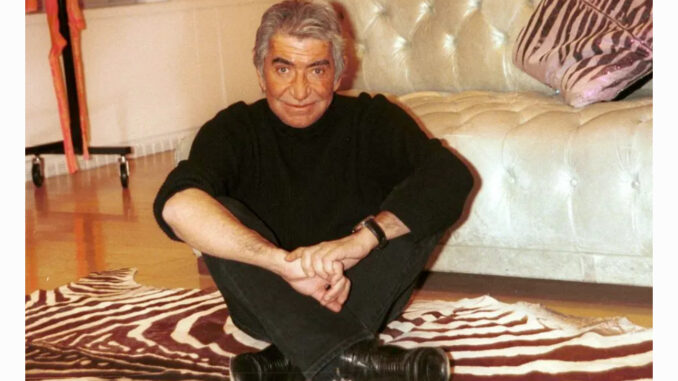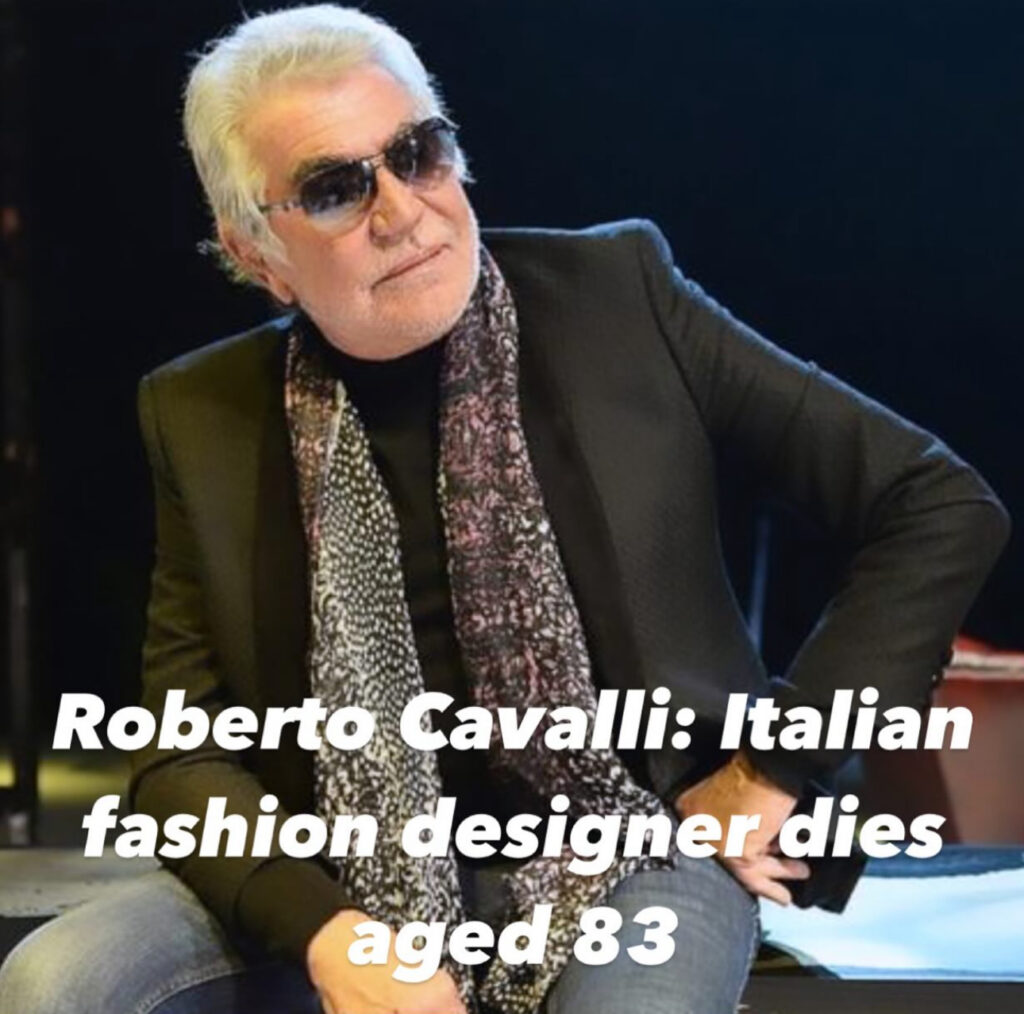
Cavalli earned his mononym. For more than 40 years the designer was known for his innovations, dedication to his craft and his aesthetic: a personal take on rock-and-roll glamor, framed and informed by the bohemian end of the luxury style spectrum. Behind the glitter and the opulence there was an incredible mind, one as intrigued by possibilities as the gentleman was committed to perfecting his vision. Which makes sense, as Cavalli believed that “excess is success.”
Blessed with a natural talent for business that most creatives do not possess, as well as an enviable sense of what could be achieved through marketing, Cavalli spent decades oscillating between an astonishingly large number of licensing agreements and indulging the artisan at his core by developing new techniques to transform the decadent textiles he used to make women feel beautiful.

Though he did design (and license) clothing and accessories for men, Cavalli even created lines of children’s clothing (Angels & Devils), it was women who inspired Cavalli and who offered him a vocation. Naomi Campbell, one of Cavalli’s favorite models, was selected to wear his newest invention down his runway in 1993; denim with Lycra, which is stretch denim, and it revolutionized the way that clothing was manufactured, produced and sold.
Born in Florence on November 15, 1940, Cavalli’s mother was a seamstress and his father worked as a mining company’s surveyor. His maternal grandfather, Giuseppe Rossi, was a painter who had exhibited work at Florence’s Uffizi Gallery, and was an important figure in the Italian Macchiaioli movement, a late 19th century Tuscan painting school, similar conceptually to the idea of Italian impressionists.
In 1944, when Cavalli was still a very young child, his father was murdered by German soldiers along with several other local men. Following an attack by members of the Italian Resistance movement, the Germans brutally retaliated by rounding up a group of locals, likely uninvolved, and shooting them in front of their families. Roberto, who was 4 when this happened, was understandably traumatized and developed a stutter. Apparently he later became quite the rebellious teen, issues which seemed to resolve when he began to study art at the Istituto d’Arte in 1957.

Leave a Reply